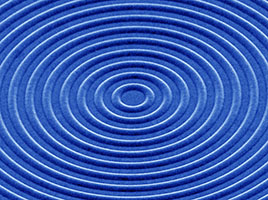Research Overview

Research in OMEL develops nanomaterials to investigate fundamental phenomena in nanophotonics. Because nanotechnology allows matter to be shaped and patterned in amazing ways, we use this to create materials that have interesting and advantageous interactions with light. While we often employ the sophisticated processes advanced by the semiconductor industry, we also seek much simpler strategies, e.g., chemical or self-assembly processes. By tailoring the size, shape, or periodicity of a solid, its optical behavior can be modified. Moreover, if one is clever, properties that are not present in any natural material can result.
Current efforts in OMEL are focused on several classes of optical materials.
First, we prepare and investigate nanometer-scale semiconductor particles known as nanocrystals. Because these materials are highly fluorescent with a color that is tunable with the particle size, they are currently exploited as phosphors in commercial flat-panel displays. Moreover, they are being explored for use as “quantum emitters” in quantum technologies. Our goal is to develop new nanocrystal materials and understand their fundamental properties for applications.
Second, we fabricate and study nanostructured surfaces (see figure above). When made from metals, electromagnetic waves known as plasmons can propagate along the exposed interface. Because plasmons allow optical energy to be concentrated in nanometer-scale volumes, they lead to many interesting and useful phenomena. For example, we have recently been investigating new types of diffraction gratings and nanolasers.
Because we fabricate and characterize all of our own structures and devices, researchers in OMEL become highly proficient in a broad range of skills. We also actively seek interactions with industry to develop our results beyond the laboratory.
For more details about our research, please see the links under “Research” above. There, we briefly describe some current activities related to Chiral Plasmonics, Fourier Surfaces, Nanolasers, and Semiconductor Nanocrystals. However, this list is incomplete and research in OMEL is always evolving into new areas.